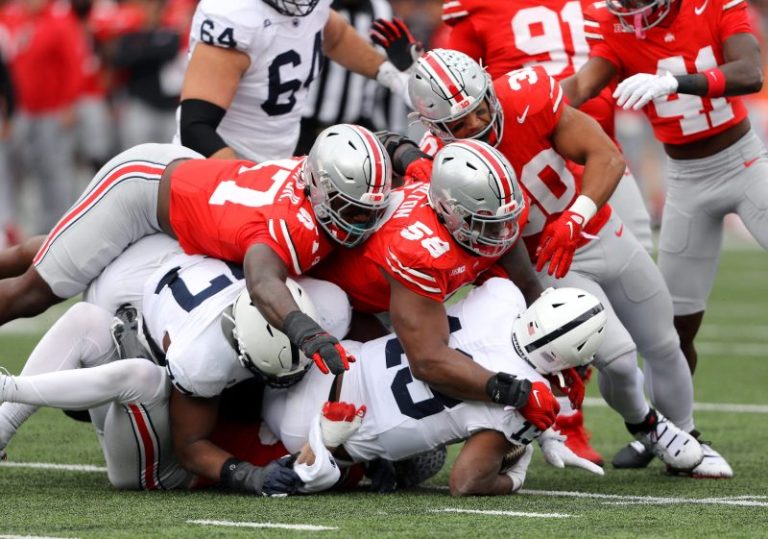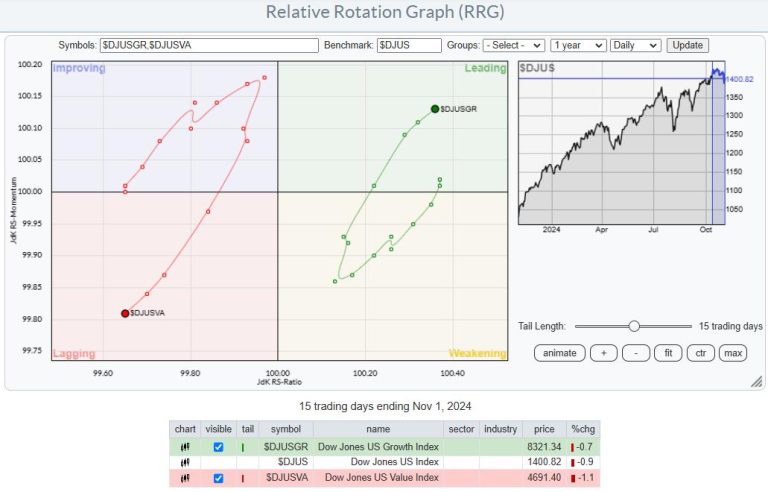All games matter in college football, but some are more equal than others. As always, we’re here to help you pick out the most important ones for your viewing enjoyment, and there’s no shortage of options as the calendar turns to November.
The Week 10 slate features two meetings of ranked opponents. One of them is a highly-anticipated battle of top-five contenders that has been on the radar since the campaign began, while the other is a completely unforeseen top-20 tilt in the ACC. A slew of other important contests in all the power conferences are on the menu as well. Let’s dive right in, shall we?
No. 4 Ohio State at No. 3 Penn State
Time/TV: noon ET, Fox.
Why watch: The clear headliner of the week features a pair of Big Ten contenders facing major questions. The Nittany Lions hope to slay the Ohio State dragon for the first time since 2016, but it’s a game the Buckeyes must have if they want to stay in the conference title hunt. The Buckeyes survived their first contest since the one-point loss at Oregon, but the result against Nebraska was anything but convincing as Ohio State was trailing in the fourth quarter and QB Will Howard and the offense struggled to find a rhythm. He still has a dazzling array of weapons like WRs Jeremiah Smith and Emeka Egbuka, but DB Jaylen Reed and the Penn State secondary are formidable. The big concern for the Nittany Lions is the health of QB Drew Allar, who left last week’s game at Wisconsin with a knee injury before halftime. His status will be a true game-time decision, but the fact that backup Beau Pribula successfully negotiated the second half will give the team confidence if he is needed again. Playmakers like RB Kaytron Allen and TE Tyler Warren will also be helpful, but they’re sure to receive added attention from Buckeyes DBs Sonny Styles and Caleb Downs.
Why it could disappoint: As we said, both teams have concerns. OSU’s inability to run the ball consistently could be a sign of trouble. On the other side, it’s fair to wonder if the Nittany Lions can do enough on offense if Allar isn’t available. From a neutral perspective that might mean we’re in for a defensive battle, but that could also translate into high tension down the stretch.
No. 17 Pittsburgh at No. 20 SMU
Time/TV: 8 p.m. ET, ACCN.
Why watch: A huge day in the ACC wraps up with this ranked showdown between two of the four teams yet to lose in league play. The Panthers arrive with a couple extra days of rest following last Thursday night’s demolition of Syracuse, while the Mustangs are happy to be back home after narrowly escaping a comedy of errors at Duke. SMU QB Kevin Jennings, if he’s able to go following an injury scare, will have to be a bit more judicious with the ball after his offense committed six turnovers a week ago. A repeat performance will almost certainly not bode well against the Panthers, who turned five interceptions into three pick-sixes in their last outing. When the Mustangs do get the ball into the proper hands, they often belong to RB Brashard Smith, who should become familiar with Pitt LB Kyle Louis. Panthers QB Eli Holstein didn’t have to do much against the Orange with the defense providing much of the scoring, but he is still putting up 258.3 yards a game through the air. He can expect to find Mustangs DB Isaiah Nwokobia around the ball wherever it goes.
Why it could disappoint: It shouldn’t. Pitt’s penchant for fourth-quarter heroics and the Mustangs’ scrappiness should keep things interesting, though SMU will need a successful early drive or two if QB Preston Stone is pressed into service.
WEEKEND FORECAST: Expert picks for every Top 25 game in Week 10
BOWL PROJECTIONS: Oregon now No. 1, two SEC teams join playoff
No. 11 Texas A&M at South Carolina
Time/TV: 7:30 p.m. ET, ABC.
Why watch: The Aggies stand alone atop the SEC and have the inside track to the championship game. But this trip east might be more treacherous than it might appear, as the Gamecocks came within a single play of taking down both LSU and Alabama. Texas A&M coach Mike Elko could have a QB conundrum on his hands, though it seems likely that dual-threat Marcel Reed will be the primary option moving forward after leading last week’s rally against LSU in relief of Conner Weigman. DB Nick Emmanwori and the South Carolina defense figure to be better prepared to make option reads, but they must also keep tabs on workhorse Aggies RB Le’Veon Moss. The Gamecocks can also change things up at QB, though LaNorris Sellers takes the bulk of the snaps with veteran Robby Ashford subbing in when needed. They’ll be up against a swarming Aggies’ defense, backed by DB Dalton Brooks.
Why it could disappoint: It’s possible the Aggies will find an extra gear as they embrace their position as league leaders. But the evidence suggests the talent gap is not all that wide. If the Gamecocks make any noise at all early, they’ll be in it until the end.
No. 2 Georgia vs. Florida
Time/TV: 3:30 p.m. ET, ABC.
Why watch: The Cocktail Party wasn’t looking particularly attractive a few weeks ago given Florida’s early struggles. But the Gators have rallied to win three of their last four, with the lone loss coming in overtime at Tennessee. Florida also just manhandled the same Kentucky squad that nearly toppled the Bulldogs earlier this season, although Georgia has looked much stronger of late. Freshman QB DJ Lagway has provided a spark for the Gators since taking over for the injured Graham Mertz. But he’ll have his hands full contending with LB Jalon Walker and the Georgia pass rush, last seen making life miserable for the Texas offense a couple of weeks ago. Bulldogs QB Carson Beck has his own issues with ball security at times, and Florida DL Tyreak Sapp will lead the effort to induce mistakes.
Why it could disappoint: Not unlike Ohio State, Georgia hasn’t been able to dominate on the ground as title teams of recent vintage could. If that should change, there’s probably nothing the Gators can do. But if the Florida run defense holds up, things might be tighter than Bulldogs’ fans would like.
No. 1 Oregon at Michigan
Time/TV: 3:30 p.m. ET, CBS.
Why watch: The defending Big Ten and national champion Wolverines can only play spoiler the rest of the way as they embark on a brutal November closing stretch. Up first are the top-ranked Ducks, who have been nothing but dominant since slipping past Ohio State to grab the mantle of league favorite. The Oregon backfield tandem of QB Dillon Gabriel and RB Jordan James can be all but unstoppable when their blockers get rolling, but LB Ernest Hausmann and the Michigan defensive front could at least slow them down for stretches. The offensive side remains a work in progress for the Wolverines, with Davis Warren and Alex Orji back to alternating at QB. The downfield passing threat is limited, however, which should enable DBs Tysheem Johnson and Kobe Savage to assist in run support.
Why it could disappoint: To be honest, it will be a pleasant surprise if it doesn’t. The Wolverines’ defense is sound but it can’t hold up all day. Once the Ducks gain a multi-score advantage, it will be time to turn out the lights.
Duke at No. 5 Miami (Fla.)
Time/TV: noon ET, ABC.
Why watch: The busy ACC slate kicks off with this clash in the Sunshine State as Duke coach Manny Diaz takes on his former school. It nearly became a showdown for a piece of the conference lead, but the Blue Devils came up a point short against SMU last week. The Hurricanes have endured their share of close finishes themselves but handled reeling Florida State with little drama in their most recent outing. Miami QB Cam Ward is front and center in the Heisman discussion with his passing numbers, over 343 yards a game with 24 TD throws. He does take risks, however, and Duke DB Chandler Rivers can make him pay if he tries to force the ball to his favorite WR Xavier Restrepo. Blue Devils QB Maalik Murphy isn’t quite as prolific in the aerial game but gets good ground support from RB Star Thomas. DL Simeon Barrow will lead the charge for the Miami defense that averages over three sacks a game.
Why it could disappoint: Duke’s inability to cash in on all those takeaways stemmed in part from issues in the kicking game. That isn’t all on Todd Pelino, as there are protection issues as well. But the Blue Devils quite simply can’t afford to leave points on the field again. Ward has done better with ball security of late, so Duke shouldn’t count on another spate of turnovers.
Texas Tech at No. 10 Iowa State
Time/TV: 3:30 p.m. ET, ESPN.
Why watch: We’ll wrap up the preview with a look at the Big 12, where the Cyclones have a clear path to the title game but get no weeks off during a long November. It begins with this home date with the Red Raiders, who were in the conference mix themselves a few weeks ago but now come to Ames on a two-game skid. Iowa State QB Rocco Becht was last seen leading the game-winning drive against Central Florida two weeks ago. He’ll look to take advantage of a leaky TTU defense that is allowing 6.6 yards per snap. The offense keeps the Red Raiders in most games, with QB Behren Morton at the controls. But his job figures to be harder against the Big 12’s stingiest pass defense, anchored by Cyclones DB Malik Verdon.
Why it could disappoint: Texas Tech will probably have to make it a track meet. We have seen that happen where Iowa State is involved, but the Cyclones seem better equipped to protect the lead. If Iowa State’s ground game is working, the Red Raiders might not have any answers.










